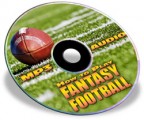Salespage Snapshot

PLR Ebook With Audio Table Of Contents
Getting the Right Equipment and Maintaining It 4
Warm Ups and Stretches to Prepare You For the Game 6
How to Focus Your Mind on the Game 8
Team Bowling Methods 10
Individual Bowling Methods 12
How to Keep Score 13
Learning About Bowling Pins 15
Gripping Guide 17
Stance Guide 19
Footwork Guide 21
Approach Guide 23
Back Swing Guide 25
Timing Guide 27
How to Aim for Your Target 29
Finishing and Following Through 31
PLR Ebook With Audio Sample Content Preview
Getting the Right Equipment and Maintaining It
There is not very much equipment needed for bowling, but it is still important to have the right size and fit. A bowling ball and the correct type of shoes are basically all you need. Some people also like to wear a type of fingerless glove to aid the grip, but this is optional.
Shoes need to be special bowling shoes with smooth soles that can slide. They can be hired from the bowling venue, or you can buy your own. Bowling shoes should not be worn out in the street. The smooth soles make them dangerously slippery and the abrasion of the street will ruin them for bowling.
Balls are the other main piece of equipment. They should be chosen by weight and size. A rough guide for weight is approximately one third of the user’s weight, but this will not always work. The best idea is to use the house balls and try several weights out before you buy your own. When playing, notice if your ball speed is decreasing towards the end of the game. If it is, this can indicate that the ball is too heavy. Speed often equals score. If the score decreases, the ball is usually traveling more slowly.
Insert your fingers into the finger holes and swing the ball. If your shoulder seems to dip down on the back swing, the ball is probably too heavy. If, when you use the ball, it doesn’t roll, but leaves the ground (lofts) then it is most likely too light. Balls usually weigh between 6 and 16 pounds. Generally, adult males can handle the 14-16 pound balls with ease, while adult females are more comfortable using those in the 10-14 pound range. Youths frequently use the lighter balls.
Weight is not the only factor in ball use, but finger hole placement also plays a part. Two fingers and the thumb must be inserted into the finger holes. The whole of the thumb should go in easily, while the fingers should go in up to the first joint, or between the first and second joint. The fit should not be a tight one; the fingers should be able to move easily in and out. The hand should be fully expanded, but not uncomfortably stretched. Some balls are made for fingertip gripping – their holes are not as deep.
When you have your own gear, you’ll need special bags for the shoes and for the balls. A small towel to wipe dirt off the ball during and after use is also good. A rosin bag to keep the hands dry is another necessity for those who play regularly…
Other Details* Sales Page: Included, HTML
* File Format: MS Word Doc, PDF
* Number of Pages: 32
* Included Graphics: Ecovers, PSD, JPG
* Download File Size: 36,364 KB













